Our Top 10 Experimental & Modern Composition Albums of 2018 list is a little different than our lists of years prior. Typically, this one appeals mainly to music listeners with niche taste, but in 2018, composers seemed to attract an unprecedented amount of attention and critical acclaim, with albums that balanced experimental inclinations with widespread appeal. Read more about that here, and dig into the ranked list below.
Then, find more of our the Best of the Year coverage — our Top 20 Pop & Rock Albums, Top 10 Folk and Country Albums, Top 10 Metal and Hardcore Albums, Top 10 Hip-Hop Albums, Top 10 Soul and R&B Albums and Top 10 Electronic Albums of 2018 — here.
Top 10 Experimental & Modern Composition Albums of 2018:
10. Christina Vantzou
No. 4
(Kranky)

Christina Vantzou's fourth studio effort opens with a melodic motif that recurs sporadically on the record: a vocal glissando, simultaneously descending and decaying. In a way, it's deceptive that her latest collection of orchestral ambience begins with a fall, given that many of its tracks are so sonically dense that they seem to possess their own gravity.
On No. 4, the Brussels-based composer and filmmaker continues to explore fluid time and space, working with a vast cast of collaborators to unfurl her compositions so patiently that they almost seem to be completely suspended. Twinkling percussion floats over dense synthesizer stirrings on "Percussion in Nonspace," while a formless roar hangs in the air like a Jericho siren on "Lava." Elsewhere, the music doesn't seem to progress so much as radiate outward: "At Dawn" beams with warm synthesizer tones, and the harmonies on "Remote Polyphony" slowly swirl together. Inertia has rarely sounded so good.
Matthew Blenkarn
9. Alexandra Stréliski
Inscape
(Secret City)
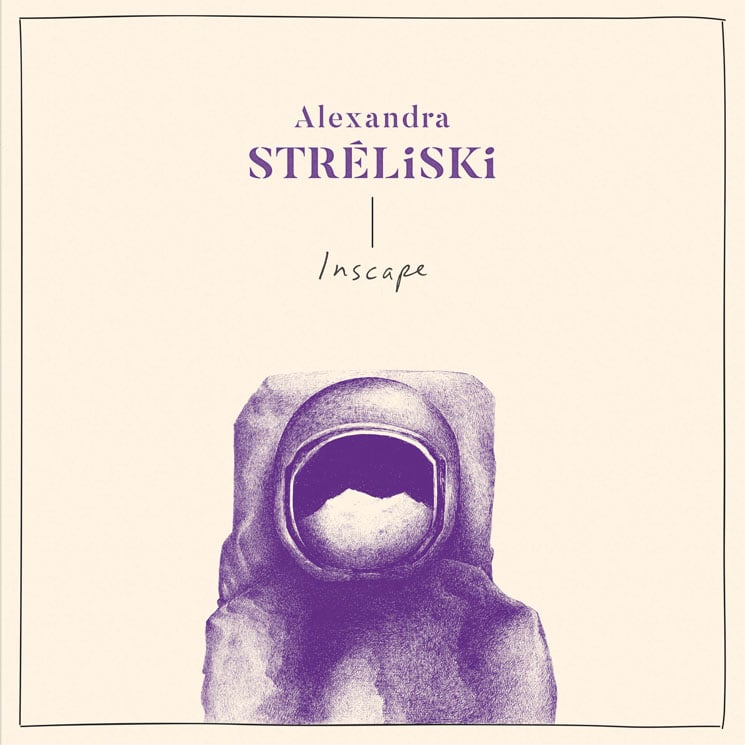
One might think that roughly 300 years after the invention of the piano, its limits would have been reached, its potential to dazzle and compel exhausted. Yet, at the hands of the right composer, the instrument still holds the power to incite strong emotions — and Alexandra Stréliski is one such composer.
Over the 11 tracks of her second album, Inscape, the Quebec pianist uses nothing more than a piano to convey movement and stillness, joy and sadness, forward momentum and wistful reminiscence, sometimes at the same time. And while Stréliski's ability to establish mood has landed her music placement in the work of director Jean-Marc Vallée (Dallas Buyers Club, Demolition, Big Little Lies), unattached to visuals, her compositions have new room for interpretation: Is "Plus tôt" hopeful, or sad? Is closing track "Le Nouveau Depart" ("The New Departure") a sorrowful goodbye or a hopeful beginning?
Obviously that's subjective, but therein lays the power of Stréliski's music; the songs on Inscape are emotionally complex and adaptive, giving them a timeless air — and transcending the age of any instrument.
Stephen Carlick
8. Kelly Moran
Ultraviolet
(Warp)
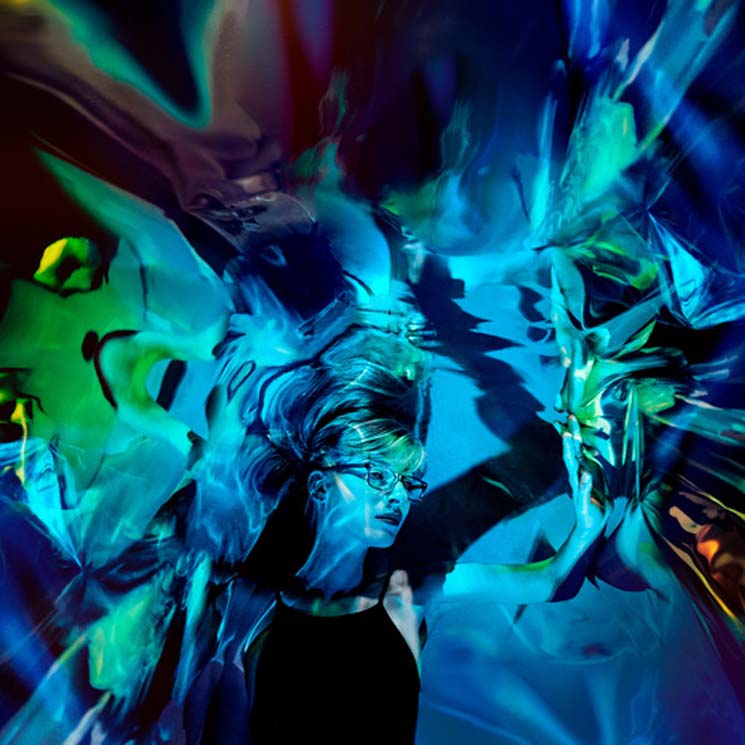
Kelly Moran melds the worlds of dance and neoclassical with Ultraviolet, on which she takes piano improvisations and pushes them through a kaleidoscope of sounds.
It's overwhelming at times, but always pretty. The twinkling piano backbone is always prevalent, yet often submerged in textures both analogue and digital between the prepared piano accoutrements — in which elements like paper or metal are placed inside the piano to alter its sound — and burbling synthesizers. It's a mind-bending mix, and Moran weaves the disparate elements in myriad ways over the course of the album.
Ultraviolet straddles both realms for a linked yet adventurous look into the many ways the piano can be manipulated. Her open-minded approach finds herself traversing a broad swath of sounds and fitting them all together beautifully on this record. In a banner year for neoclassical piano music, Moran's record is one of the most adventurous of the bunch.
Matt Bobkin
7. Makaya McCraven
Universal Beings
(International Anthem)

Fusion is a loaded term when it comes to jazz, but drummer, producer and beat scientist Makaya McCraven has been redefining it in his own image since 2015. Eschewing the expected modes of composing and live-off-the-floor recording, he arranges improvisational happenings with a wide range of collaborators all over the world, distilling the results into singular expressions of vibrant beauty like a spiritual reconciliation of the jazz diaspora.
Universal Beings marked the culmination of his many efforts to date, finding post-bop, boom-bap perfection in the post-production cut-and-paste of live jam sessions recorded in Chicago, London, Los Angeles and Queens, New York with the likes of Brandee Younger (harp), Dezron Douglas (bass), Joel Ross (vibraphone), Tomeka Reid (cello), Shabaka Hutchings (saxophone), Ashley Henry (piano), Miguel Atwood-Ferguson (violin), Carlos Niño (percussion) and Jeff Parker (guitar), among others. One might think a collage style such as this would end up sounding like forced mash-up chaos, but McCraven forges the results into a pristine full-length capsule of hip-hop-tinged contemporary jazz so organically that someone listening to it unaware would likely assume Universal Beings was all carefully composed from the start.
Alan Ranta
6. Sarah Davachi
Gave in Rest
(Ba Da Bing!)
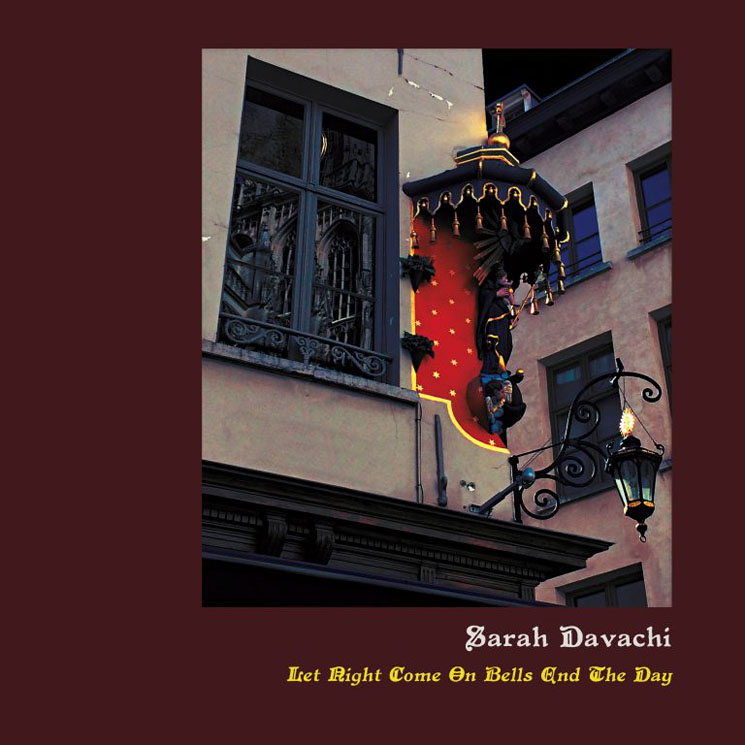
Sarah Davachi's Gave in Rest, her second release of 2018, is a collection of remarkable, purposefully crafted electro-acoustic compositions. Davachi sculpts the sounds of her voice, flute, Mellotron, piano, synth, and organs, and is joined by Thierry Amar (contrabass), Terri Hron (recorder), Jessica Moss (violin) and Lisa McGee (voice). Together, Davachi and co. present modern readings of medieval and Renaissance compositions whose grandeur are repurposed to satisfy a contemporary need for ritual and meditation.
Light moves throughout these pieces: "Matins," the album's daybreak, Moss's violin evokes the sharp, new light of the day rising. By "Third Hour," the day is gently unfolding and the song's communal tones feel full. On nightfall piece "Gloaming," the choppy rhythm of a warped sounding piano drags in the cloak of darkness. Whatever time of day, Davachi's Gave in Rest shows us the beauty and power of quiet.
Laura Stanley
5. Nils Frahm
All Melody
(Erased Tapes)
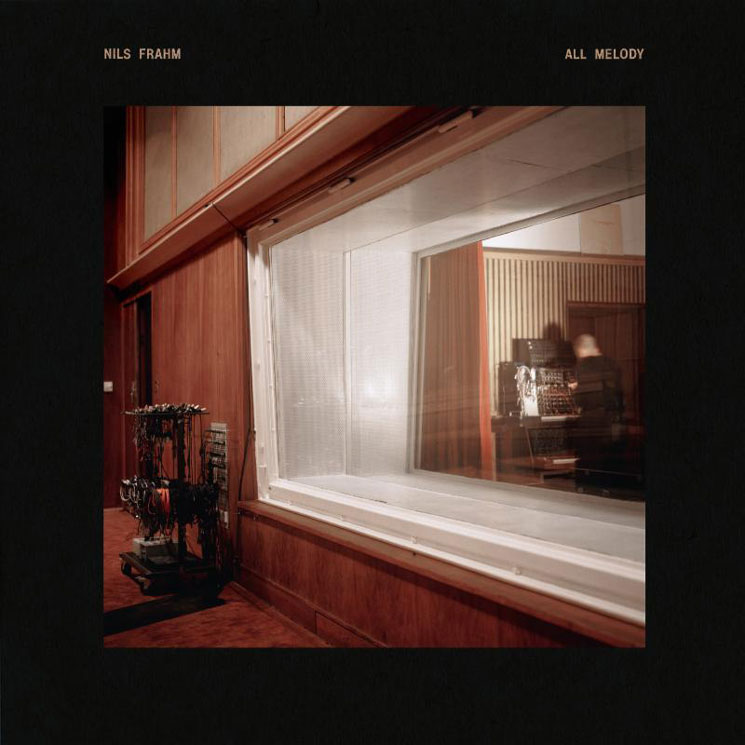
Recorded at the famed Funkhaus Berlin, All Melody is as much about the process as it is about the output. He's no stranger to conceptual albums, but Frahm put aside any overarching idea for his latest album and concentrated on the physical feeling that sound can produce, and as such the album is indebted to its surroundings and its instruments.
Frahm spent the better part of two years building out Saal 3, originally designed for recording chamber ensembles, and transforming it into his instrument of dreams. This context is essential in understanding All Melody; as a standalone piece, it works beautifully. Live performances were designed to recreate Saal 3, to impressive effect, which further highlights the album's intricacies and Frahm's multilayered approach. But this is an album that begs to be lived with and experienced, one that continuously evolves over time and puts Frahm's virtuosic abilities front and centre.
Scott Simpson
4. Tim Hecker
Konoyo
(Kranky)
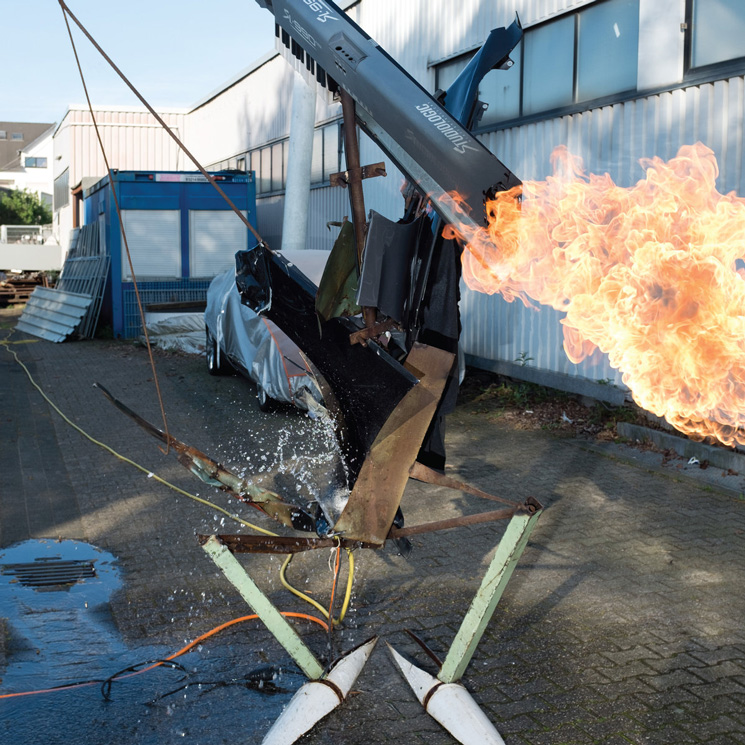
Konoyo is Tim Hecker's 'adult' album — but one of those fascinating weirdo adults, like one you'd see in a Derek Jarman film. On his ninth full-length, the Montreal-via-Vancouver experimentalist traveled to Tokyo, assembling a gagaku group of musicians before writing the album's seven striking compositions in a Buddhist temple. The resulting LP finds Hecker pulling apart his regular layered noise, instead delivering simple and extremely affecting pieces that resemble warped and reassembled classical suites.
In addition to his gagaku ensemble, Hecker also brought in keyboardist Kara-Lis Coverdale, cellist Mariel Roberts and experimental electro artist Ben Frost to help helm the boards, making sure his Eastern excursion didn't become to a carbon copy tribute. But Konoyo is much more than its backstory suggests, as Hecker seems utterly set on exposing the raw beauty of each tone, each sound. Konoyo never sounds arranged or prescriptive…just fascinating. Weirdo adult fascinating.
Daniel Sylvester
3. Jean-Michel Blais
Dans ma main
(Arts & Crafts)

It's astounding that Jean-Michel Blais elevated his neoclassical compositions to such soaring highs on Dans ma main. What were once spacious and swelling cascades of notes on Il are here complemented with very subtle synth incorporations (an influence, in part, from working with CFCF on their EP Cascades last year).
His ability to build beautiful compositions layer by layer through varying cadences, pedals and some stellar dynamics gives "blind" life, while the subtle darkness of "roses" belies some rather interesting influences: Rachmaninoff, Eric Carmen and Radiohead among them. As the piano gently twinkles on "sourdine," the ambiance evokes a stroll through the neighbourhood in the wee hours. There's something that this album nails with its tone, intimately capturing the vulnerability and sobering thoughts that often come out at night.
Dans ma main is characterized by a certain calmness, letting thoughts wander to create a wholly unique musical vision. An incredible step forward for Blais, it showcases the best that Canada's neoclassical vanguard has to offer. Intimate never sounded so good.
Josh Weinberg
2. Kamasi Washington
Heaven and Earth
(Young Turks)

Widely hailed as a modern saviour of jazz upon the arrival of The Epic, Kamasi Washington's Heaven and Earth is no less ambitious — maybe even more so — than its predecessor. Nearly a half-hour shorter than the aforementioned 2015 LP (if you don't include the near 40-minute, five-track bonus disc The Choice), Heaven and Earth is a testament to how engaging jazz music can be under the direction of a bandleader with no shortage of ambition for the expanded format.
Washington's decision to split the album into an Earth half ("The world that I am a part of") and Heaven half ("The world that is a part of me") provides both a rewarding conceptual contrast and a more manageable way to take in the sounds of Washington and his exceptionally talented cast of collaborators.
The songs on Earth play more brash and bold, felt immediately on opener "Fists of Fury." Washington's riveting rework of the Bruce Lee movie theme finds him giving a stunning solo before vocalists Dwight Trible and Patrice Quinn declare, "Our time as victims is over. We will no longer ask for justice. Instead, we will take our retribution." On the flip, Brandon Coleman's vocoder on "Vi Lua Vi Sol" and the closing one-two of "Show Us the Way" and "Will You Sing" highlight Heaven's melodic flights of fancy.
Calum Slingerland
1. Jeremy Dutcher
Wolastoqiyik Lintuwakonawa
(Independent)

"When you bring the songs back, you're gonna bring the dances back. You're gonna bring the people back. You're gonna bring everything back."
Sampled from a conversation with his elder Maggie Paul, that sentiment is both the subject and object of Jeremy Dutcher's Polaris Music Prize-winning Wolastoqiyik Lintuwakonawa ("Our Maliseet Songs"), a genre-defying collection that breathes new life into traditional songs he accessed through archival recordings of his ancestral Wolastoq community in New Brunswick.
Those recordings are often woven directly into the fabric of these new compositions, as Dutcher's soaring, operatic tenor duets with the voices of his ancestors while modern instrumentation flows freely. On album opener "Mehcinut" ("Death Chant"), Dutcher's cascading piano is led to a reverent march by a persistent snare drum, while brushed drums and a double bass dance all over the coda. "Essuwonike" ("Trading Song") exchanges propulsive scenes of dance-y, baroque-inflected folk song for stabbing pianos and the ecstatic cacophony of crashing cymbals. The album climaxes with the expansive, swirling drama of "Pomok naka Poktoinskwes" ("Fisher and the Water Spirit"), Teiysa Kasahara's whooping soprano joining the action before the track reaches its pounding conclusion.
As accessible as it is ambitious, it's a beautifully rendered collection that reaches beyond generations and traditions to create music in dialogue with time itself, transcending the white noise of popular modernity and propelling culture into the future on new wings, building a legacy that's only begun to take shape. Wolastoqiyik Lintuwakonawa is a brilliant, vital undertaking that demands to be reckoned with.
Tom Beedham
Then, find more of our the Best of the Year coverage — our Top 20 Pop & Rock Albums, Top 10 Folk and Country Albums, Top 10 Metal and Hardcore Albums, Top 10 Hip-Hop Albums, Top 10 Soul and R&B Albums and Top 10 Electronic Albums of 2018 — here.
Top 10 Experimental & Modern Composition Albums of 2018:
10. Christina Vantzou
No. 4
(Kranky)

Christina Vantzou's fourth studio effort opens with a melodic motif that recurs sporadically on the record: a vocal glissando, simultaneously descending and decaying. In a way, it's deceptive that her latest collection of orchestral ambience begins with a fall, given that many of its tracks are so sonically dense that they seem to possess their own gravity.
On No. 4, the Brussels-based composer and filmmaker continues to explore fluid time and space, working with a vast cast of collaborators to unfurl her compositions so patiently that they almost seem to be completely suspended. Twinkling percussion floats over dense synthesizer stirrings on "Percussion in Nonspace," while a formless roar hangs in the air like a Jericho siren on "Lava." Elsewhere, the music doesn't seem to progress so much as radiate outward: "At Dawn" beams with warm synthesizer tones, and the harmonies on "Remote Polyphony" slowly swirl together. Inertia has rarely sounded so good.
Matthew Blenkarn
9. Alexandra Stréliski
Inscape
(Secret City)

One might think that roughly 300 years after the invention of the piano, its limits would have been reached, its potential to dazzle and compel exhausted. Yet, at the hands of the right composer, the instrument still holds the power to incite strong emotions — and Alexandra Stréliski is one such composer.
Over the 11 tracks of her second album, Inscape, the Quebec pianist uses nothing more than a piano to convey movement and stillness, joy and sadness, forward momentum and wistful reminiscence, sometimes at the same time. And while Stréliski's ability to establish mood has landed her music placement in the work of director Jean-Marc Vallée (Dallas Buyers Club, Demolition, Big Little Lies), unattached to visuals, her compositions have new room for interpretation: Is "Plus tôt" hopeful, or sad? Is closing track "Le Nouveau Depart" ("The New Departure") a sorrowful goodbye or a hopeful beginning?
Obviously that's subjective, but therein lays the power of Stréliski's music; the songs on Inscape are emotionally complex and adaptive, giving them a timeless air — and transcending the age of any instrument.
Stephen Carlick
8. Kelly Moran
Ultraviolet
(Warp)

Kelly Moran melds the worlds of dance and neoclassical with Ultraviolet, on which she takes piano improvisations and pushes them through a kaleidoscope of sounds.
It's overwhelming at times, but always pretty. The twinkling piano backbone is always prevalent, yet often submerged in textures both analogue and digital between the prepared piano accoutrements — in which elements like paper or metal are placed inside the piano to alter its sound — and burbling synthesizers. It's a mind-bending mix, and Moran weaves the disparate elements in myriad ways over the course of the album.
Ultraviolet straddles both realms for a linked yet adventurous look into the many ways the piano can be manipulated. Her open-minded approach finds herself traversing a broad swath of sounds and fitting them all together beautifully on this record. In a banner year for neoclassical piano music, Moran's record is one of the most adventurous of the bunch.
Matt Bobkin
7. Makaya McCraven
Universal Beings
(International Anthem)

Fusion is a loaded term when it comes to jazz, but drummer, producer and beat scientist Makaya McCraven has been redefining it in his own image since 2015. Eschewing the expected modes of composing and live-off-the-floor recording, he arranges improvisational happenings with a wide range of collaborators all over the world, distilling the results into singular expressions of vibrant beauty like a spiritual reconciliation of the jazz diaspora.
Universal Beings marked the culmination of his many efforts to date, finding post-bop, boom-bap perfection in the post-production cut-and-paste of live jam sessions recorded in Chicago, London, Los Angeles and Queens, New York with the likes of Brandee Younger (harp), Dezron Douglas (bass), Joel Ross (vibraphone), Tomeka Reid (cello), Shabaka Hutchings (saxophone), Ashley Henry (piano), Miguel Atwood-Ferguson (violin), Carlos Niño (percussion) and Jeff Parker (guitar), among others. One might think a collage style such as this would end up sounding like forced mash-up chaos, but McCraven forges the results into a pristine full-length capsule of hip-hop-tinged contemporary jazz so organically that someone listening to it unaware would likely assume Universal Beings was all carefully composed from the start.
Alan Ranta
6. Sarah Davachi
Gave in Rest
(Ba Da Bing!)

Sarah Davachi's Gave in Rest, her second release of 2018, is a collection of remarkable, purposefully crafted electro-acoustic compositions. Davachi sculpts the sounds of her voice, flute, Mellotron, piano, synth, and organs, and is joined by Thierry Amar (contrabass), Terri Hron (recorder), Jessica Moss (violin) and Lisa McGee (voice). Together, Davachi and co. present modern readings of medieval and Renaissance compositions whose grandeur are repurposed to satisfy a contemporary need for ritual and meditation.
Light moves throughout these pieces: "Matins," the album's daybreak, Moss's violin evokes the sharp, new light of the day rising. By "Third Hour," the day is gently unfolding and the song's communal tones feel full. On nightfall piece "Gloaming," the choppy rhythm of a warped sounding piano drags in the cloak of darkness. Whatever time of day, Davachi's Gave in Rest shows us the beauty and power of quiet.
Laura Stanley
5. Nils Frahm
All Melody
(Erased Tapes)

Recorded at the famed Funkhaus Berlin, All Melody is as much about the process as it is about the output. He's no stranger to conceptual albums, but Frahm put aside any overarching idea for his latest album and concentrated on the physical feeling that sound can produce, and as such the album is indebted to its surroundings and its instruments.
Frahm spent the better part of two years building out Saal 3, originally designed for recording chamber ensembles, and transforming it into his instrument of dreams. This context is essential in understanding All Melody; as a standalone piece, it works beautifully. Live performances were designed to recreate Saal 3, to impressive effect, which further highlights the album's intricacies and Frahm's multilayered approach. But this is an album that begs to be lived with and experienced, one that continuously evolves over time and puts Frahm's virtuosic abilities front and centre.
Scott Simpson
4. Tim Hecker
Konoyo
(Kranky)

Konoyo is Tim Hecker's 'adult' album — but one of those fascinating weirdo adults, like one you'd see in a Derek Jarman film. On his ninth full-length, the Montreal-via-Vancouver experimentalist traveled to Tokyo, assembling a gagaku group of musicians before writing the album's seven striking compositions in a Buddhist temple. The resulting LP finds Hecker pulling apart his regular layered noise, instead delivering simple and extremely affecting pieces that resemble warped and reassembled classical suites.
In addition to his gagaku ensemble, Hecker also brought in keyboardist Kara-Lis Coverdale, cellist Mariel Roberts and experimental electro artist Ben Frost to help helm the boards, making sure his Eastern excursion didn't become to a carbon copy tribute. But Konoyo is much more than its backstory suggests, as Hecker seems utterly set on exposing the raw beauty of each tone, each sound. Konoyo never sounds arranged or prescriptive…just fascinating. Weirdo adult fascinating.
Daniel Sylvester
3. Jean-Michel Blais
Dans ma main
(Arts & Crafts)

It's astounding that Jean-Michel Blais elevated his neoclassical compositions to such soaring highs on Dans ma main. What were once spacious and swelling cascades of notes on Il are here complemented with very subtle synth incorporations (an influence, in part, from working with CFCF on their EP Cascades last year).
His ability to build beautiful compositions layer by layer through varying cadences, pedals and some stellar dynamics gives "blind" life, while the subtle darkness of "roses" belies some rather interesting influences: Rachmaninoff, Eric Carmen and Radiohead among them. As the piano gently twinkles on "sourdine," the ambiance evokes a stroll through the neighbourhood in the wee hours. There's something that this album nails with its tone, intimately capturing the vulnerability and sobering thoughts that often come out at night.
Dans ma main is characterized by a certain calmness, letting thoughts wander to create a wholly unique musical vision. An incredible step forward for Blais, it showcases the best that Canada's neoclassical vanguard has to offer. Intimate never sounded so good.
Josh Weinberg
2. Kamasi Washington
Heaven and Earth
(Young Turks)

Widely hailed as a modern saviour of jazz upon the arrival of The Epic, Kamasi Washington's Heaven and Earth is no less ambitious — maybe even more so — than its predecessor. Nearly a half-hour shorter than the aforementioned 2015 LP (if you don't include the near 40-minute, five-track bonus disc The Choice), Heaven and Earth is a testament to how engaging jazz music can be under the direction of a bandleader with no shortage of ambition for the expanded format.
Washington's decision to split the album into an Earth half ("The world that I am a part of") and Heaven half ("The world that is a part of me") provides both a rewarding conceptual contrast and a more manageable way to take in the sounds of Washington and his exceptionally talented cast of collaborators.
The songs on Earth play more brash and bold, felt immediately on opener "Fists of Fury." Washington's riveting rework of the Bruce Lee movie theme finds him giving a stunning solo before vocalists Dwight Trible and Patrice Quinn declare, "Our time as victims is over. We will no longer ask for justice. Instead, we will take our retribution." On the flip, Brandon Coleman's vocoder on "Vi Lua Vi Sol" and the closing one-two of "Show Us the Way" and "Will You Sing" highlight Heaven's melodic flights of fancy.
Calum Slingerland
1. Jeremy Dutcher
Wolastoqiyik Lintuwakonawa
(Independent)

"When you bring the songs back, you're gonna bring the dances back. You're gonna bring the people back. You're gonna bring everything back."
Sampled from a conversation with his elder Maggie Paul, that sentiment is both the subject and object of Jeremy Dutcher's Polaris Music Prize-winning Wolastoqiyik Lintuwakonawa ("Our Maliseet Songs"), a genre-defying collection that breathes new life into traditional songs he accessed through archival recordings of his ancestral Wolastoq community in New Brunswick.
Those recordings are often woven directly into the fabric of these new compositions, as Dutcher's soaring, operatic tenor duets with the voices of his ancestors while modern instrumentation flows freely. On album opener "Mehcinut" ("Death Chant"), Dutcher's cascading piano is led to a reverent march by a persistent snare drum, while brushed drums and a double bass dance all over the coda. "Essuwonike" ("Trading Song") exchanges propulsive scenes of dance-y, baroque-inflected folk song for stabbing pianos and the ecstatic cacophony of crashing cymbals. The album climaxes with the expansive, swirling drama of "Pomok naka Poktoinskwes" ("Fisher and the Water Spirit"), Teiysa Kasahara's whooping soprano joining the action before the track reaches its pounding conclusion.
As accessible as it is ambitious, it's a beautifully rendered collection that reaches beyond generations and traditions to create music in dialogue with time itself, transcending the white noise of popular modernity and propelling culture into the future on new wings, building a legacy that's only begun to take shape. Wolastoqiyik Lintuwakonawa is a brilliant, vital undertaking that demands to be reckoned with.
Tom Beedham
